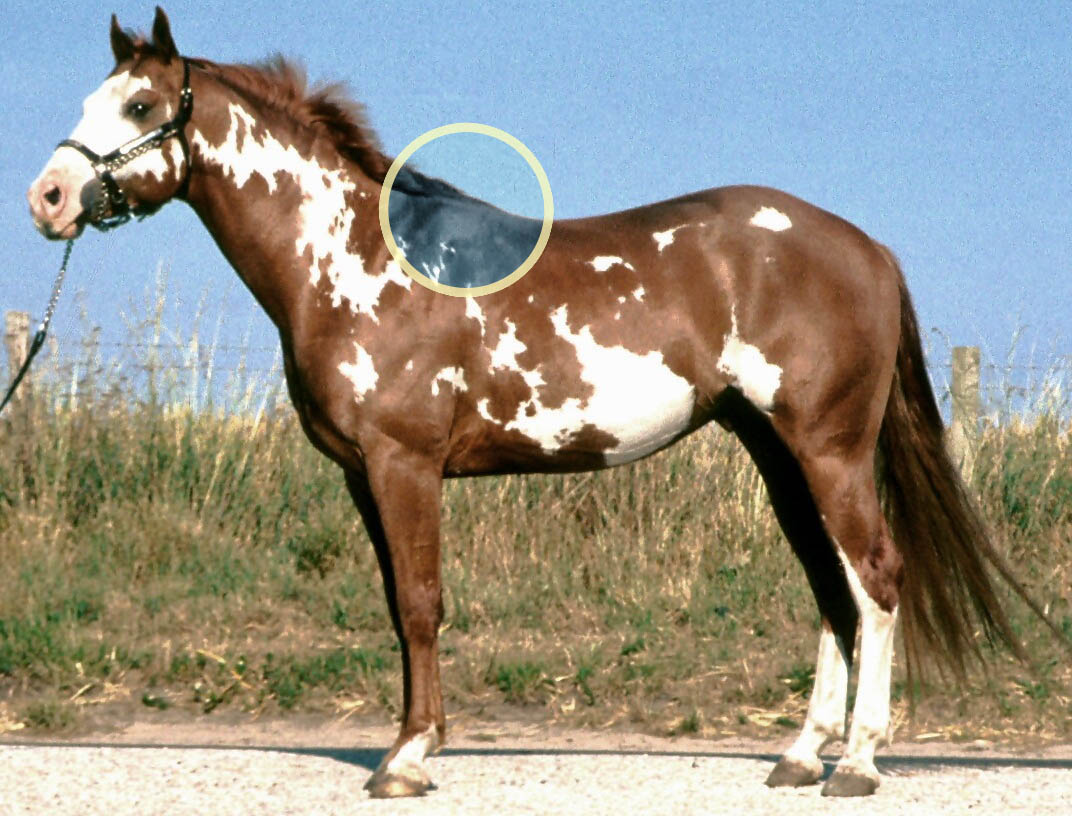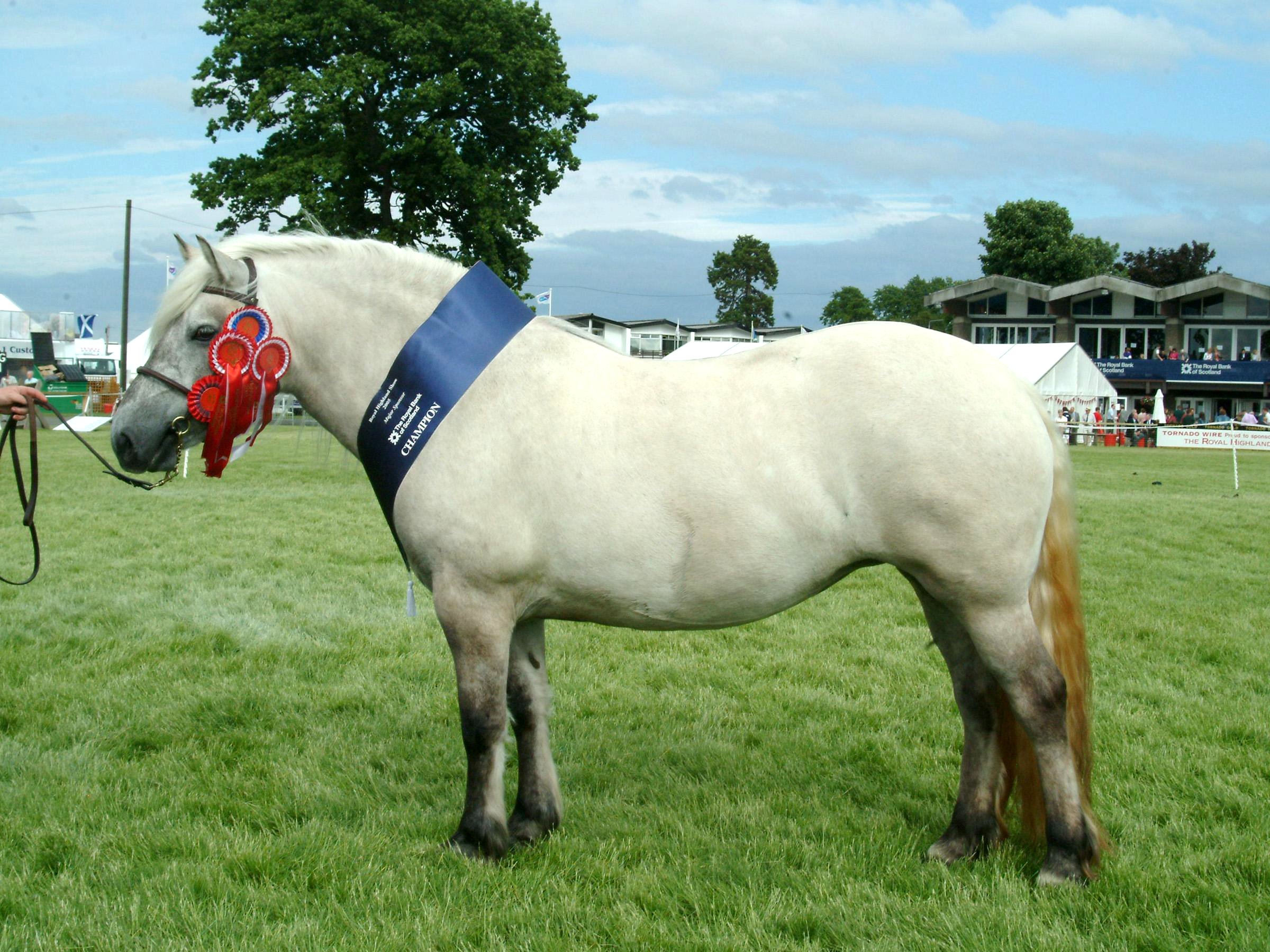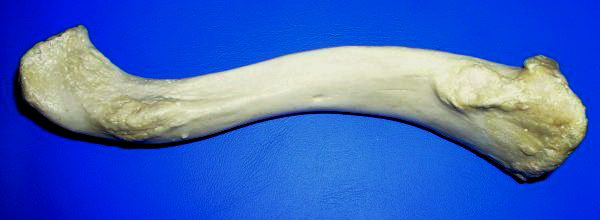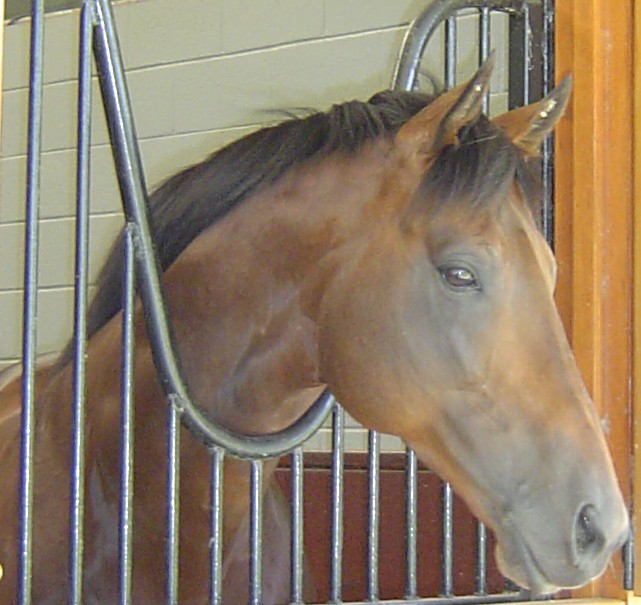|
Withers
Withers are the ridge between the shoulder blades of an animal, typically a quadruped. In many species, this ridge is the tallest point of the body. In horses and dogs, it is the standard place to measure the animal's height. In contrast, cattle are often measured to the top of the hips. The term (pronounced ) derives from Old English ''wither'' ("against'), because the withers are the part of a Working_animal#Draft_animals , draft animal that pushes against a Mechanical load, load. Horses The withers in horses are formed by the dorsal spinal processes of roughly the 3rd through 11th thoracic vertebrae, which are unusually long in this area. Most horses have 18 thoracic vertebrae. The processes at the withers can be more than long. Since they do not move relative to the ground as the horse's head does, the withers are used as the measuring point for the height of a horse. Horses are sometimes measured in hand (unit), hands – one hand is . Horse heights are extremely ... [...More Info...] [...Related Items...] OR: [Wikipedia] [Google] [Baidu] |
Equine Conformation
Equine conformation evaluates a horse's bone structure, musculature, and its body proportions in relation to each other. Undesirable conformation can limit the ability to perform a specific task. Although there are several faults with universal disadvantages, a horse's conformation is usually judged according to its intended use. Thus "form to function" is one of the first set of traits considered in judging conformation. A horse with poor form for a show jumper could have excellent conformation for a cutting horse or draft horse. Every horse has good and bad points of conformation and many horses excel even with conformation faults. Head and neck The standard of the ideal head varies dramatically from breed to breed based on a mixture of the role the horse is bred for and what breeders, owners and enthusiasts find appealing. Breed standards frequently cite large eyes, a broad forehead and a dry head-to-neck connection as important to correctness about the head. Traditional ... [...More Info...] [...Related Items...] OR: [Wikipedia] [Google] [Baidu] |
Dog Anatomy
Dog anatomy comprises the anatomical study of the visible parts of the body of a dog, domestic dog. Details of structures vary tremendously from dog breed, breed to breed, more than in any other animal species, wild or domesticated, as dogs are highly variable in height and weight. The smallest known adult dog was a Yorkshire Terrier that stood only at the shoulder, in length along the head and body, and weighed only . The heaviest dog was an English Mastiff named Zorba (dog), Zorba, which weighed . The tallest known adult dog is a Great Dane that stands at the shoulder. Anatomy Muscles The following is a list of the muscles in the dog, along with their origin, insertion, action and innervation. Extrinsic muscles of the thoracic limb and related structures: Descending superficial pectoral: originates on the first sternebrae and inserts on the greater tubercle of the humerus. It both adducts the limb and also prevents the limb from being abducted during weight bearing. It i ... [...More Info...] [...Related Items...] OR: [Wikipedia] [Google] [Baidu] |
Quadruped
Quadrupedalism is a form of locomotion in which animals have four legs that are used to bear weight and move around. An animal or machine that usually maintains a four-legged posture and moves using all four legs is said to be a quadruped (from Latin ''quattuor'' for "four", and ''pes'', ''pedis'' for "foot"). Quadruped animals are found among both vertebrates and invertebrates. Quadrupeds vs. tetrapods Although the words ‘quadruped’ and ‘tetrapod’ are both derived from terms meaning ‘four-footed’, they have distinct meanings. A tetrapod is any member of the taxonomic unit Tetrapoda (which is defined by descent from a specific four-limbed ancestor), whereas a quadruped actually uses four limbs for locomotion. Not all tetrapods are quadrupeds and not all quadrupedal animals are tetrapods; some arthropods are adapted for four-footed locomotion, such as the raptorial Mantodea, or mantises, and the Nymphalidae, or brush-footed butterflies—the largest butterfly f ... [...More Info...] [...Related Items...] OR: [Wikipedia] [Google] [Baidu] |
Pony
A pony is a type of small horse, usually measured under a specified height at maturity. Ponies often have thicker coats, manes and tails, compared to larger horses, and proportionally shorter legs, wider barrels, heavier , thicker necks and shorter heads. In modern use, breed registries and horse shows may define a pony as measuring at the withers below a certain height; height limits varying from about to . Some distinguish between horse or pony based on its breed or phenotype, regardless of its height. The word ''pony'' derives from the old French ''poulenet'', a diminutive of meaning foal, a young, immature horse. A full-sized horse may sometimes be called a pony as a term of endearment. Definition For many forms of competition, the official definition of a pony is a horse that measures up to at the withers. Standard horses are taller than 14.2. The International Federation for Equestrian Sports defines the official cutoff point at without shoes and with shoes ... [...More Info...] [...Related Items...] OR: [Wikipedia] [Google] [Baidu] |
Animal Anatomy
Anatomy () is the branch of Morphology (biology), morphology concerned with the study of the internal structure of organisms and their parts. Anatomy is a branch of natural science that deals with the structural organization of living things. It is an old science, having its beginnings in prehistoric times. Anatomy is inherently tied to developmental biology, embryology, comparative anatomy, evolutionary biology, and phylogeny, as these are the processes by which anatomy is generated, both over immediate and long-term timescales. Anatomy and physiology, which study the structure and function (biology), function of organisms and their parts respectively, make a natural pair of related disciplines, and are often studied together. Human anatomy is one of the essential basic sciences that are applied in medicine, and is often studied alongside physiology. Anatomy is a complex and dynamic field that is constantly evolving as discoveries are made. In recent years, there has been a ... [...More Info...] [...Related Items...] OR: [Wikipedia] [Google] [Baidu] |
Dog Breeds
This list of dog breeds includes both extant and extinct dog breeds, varieties and types. A research article on dog genomics published in Science/AAAS defines modern dog breeds as "a recent invention defined by conformation to a physical ideal and purity of lineage". According to BigThink, over 40% of the world's dog breeds come from the United Kingdom, France and Germany. It states: "Great Britain and France are the ground zero of dog fancying, with 57 registered breeds each. Germany is not far behind, with 47 breeds. These three countries alone represent more than 40% of all dog breeds recognized by the Fédération Cynologique Internationale." Extant breeds, varieties and types A–C D–K L–R S–Z Extinct and critically endangered breeds, varieties and types See also * Dog type * List of dog crossbreeds * List of Italian dog breeds * List of dog breeds from India * List of Tibetan dog breeds Notes References Citations Bibliography * ... [...More Info...] [...Related Items...] OR: [Wikipedia] [Google] [Baidu] |
Breed Standard
In animal husbandry or animal fancy, a breed standard is a description of the characteristics of a hypothetical or ideal example of a breed. The description may include phenotype, physical or morphology (biology), morphological detail, genotype, genetic criteria, or criteria of athletic or productive performance. It may also describe faults or deficiencies that would disqualify an animal from registration or from animal reproduction, reproduction. The hypothetical ideal example may be called a "breed type". Breed standards are devised by breed associations or breed clubs, not by individuals, and are written to reflect the use or purpose of the species and breed of the animal. Breed standards help define the ideal animal of a breed and provide goals for breeders in improving stock. In essence a breed standard is a blueprint for an animal fit for the function it was bred - i.e. herding, tracking etc. [...More Info...] [...Related Items...] OR: [Wikipedia] [Google] [Baidu] |
Dog Sports
Dog sports are competitive activities specifically designed for dogs. Dogs typically participate in sports with the help of owners, although some dog sports do not require human participation. A 2015 survey found that dog owners of all classes participate in dog sports, with owners from large cities (over 500,000 people), medium cities (between 100,000 and 500,000 people), small cities (less than 100,000 people), and rural areas each accounting for roughly the same percentage of dog sport competitors. According to the survey, the most popular dog sports are obedience sports, and the majority of people that compete in dog sports compete in over twelve dog sporting events per year. Additionally, the majority of owners that compete in dog sports are primarily motivated by internal motivators (such as satisfaction or improving their relationships with their dogs) rather than external motivators (such as prizes). Combat sports Herding sports Obedience sports Pulling sports R ... [...More Info...] [...Related Items...] OR: [Wikipedia] [Google] [Baidu] |
Shoulder Blade
The scapula (: scapulae or scapulas), also known as the shoulder blade, is the bone that connects the humerus (upper arm bone) with the clavicle (collar bone). Like their connected bones, the scapulae are paired, with each scapula on either side of the body being roughly a mirror image of the other. The name derives from the Classical Latin word for trowel or small shovel, which it was thought to resemble. In compound terms, the prefix omo- is used for the shoulder blade in medical terminology. This prefix is derived from ὦμος (ōmos), the Ancient Greek word for shoulder, and is cognate with the Latin , which in Latin signifies either the shoulder or the upper arm bone. The scapula forms the back of the shoulder girdle. In humans, it is a flat bone, roughly triangular in shape, placed on a posterolateral aspect of the thoracic cage. Structure The scapula is a thick, flat bone lying on the thoracic wall that provides an attachment for three groups of muscles: intrinsic, ... [...More Info...] [...Related Items...] OR: [Wikipedia] [Google] [Baidu] |
Clavicle
The clavicle, collarbone, or keybone is a slender, S-shaped long bone approximately long that serves as a strut between the scapula, shoulder blade and the sternum (breastbone). There are two clavicles, one on each side of the body. The clavicle is the only long bone in the body that lies horizontally. Together with the shoulder blade, it makes up the shoulder girdle. It is a palpable bone and, in people who have less fat in this region, the location of the bone is clearly visible. It receives its name from Latin ''clavicula'' 'little key' because the bone rotates along its axis like a key when the shoulder is Abduction (kinesiology), abducted. The clavicle is the most commonly fractured bone. It can easily be fractured by impacts to the shoulder from the force of falling on outstretched arms or by a direct hit. Structure The collarbone is a thin doubly curved long bone that connects the human arm, arm to the torso, trunk of the body. Located directly above the first rib, it ac ... [...More Info...] [...Related Items...] OR: [Wikipedia] [Google] [Baidu] |
Thoroughbred
The Thoroughbred is a list of horse breeds, horse breed developed for Thoroughbred racing, horse racing. Although the word ''thoroughbred'' is sometimes used to refer to any breed of purebred horse, it technically refers only to the Thoroughbred breed. Thoroughbreds are considered "Hot-blooded horse, hot-blooded" horses that are known for their agility, speed, and spirit. The Thoroughbred, as it is known today, was developed in 17th- and 18th-century England, when native mares were Crossbreed, crossbred with imported stallion (horse), stallions of Arabian horse, Arabian, Barb horse, Barb, and Turkoman horse, Turkoman breeding. All modern Thoroughbreds can trace their pedigrees to three stallions originally imported into England in the 17th and 18th centuries, and to a larger number of foundation bloodstock, foundation mares of mostly English breeding. During the 18th and 19th centuries, the Thoroughbred breed spread throughout the world; they were imported into North America ... [...More Info...] [...Related Items...] OR: [Wikipedia] [Google] [Baidu] |










